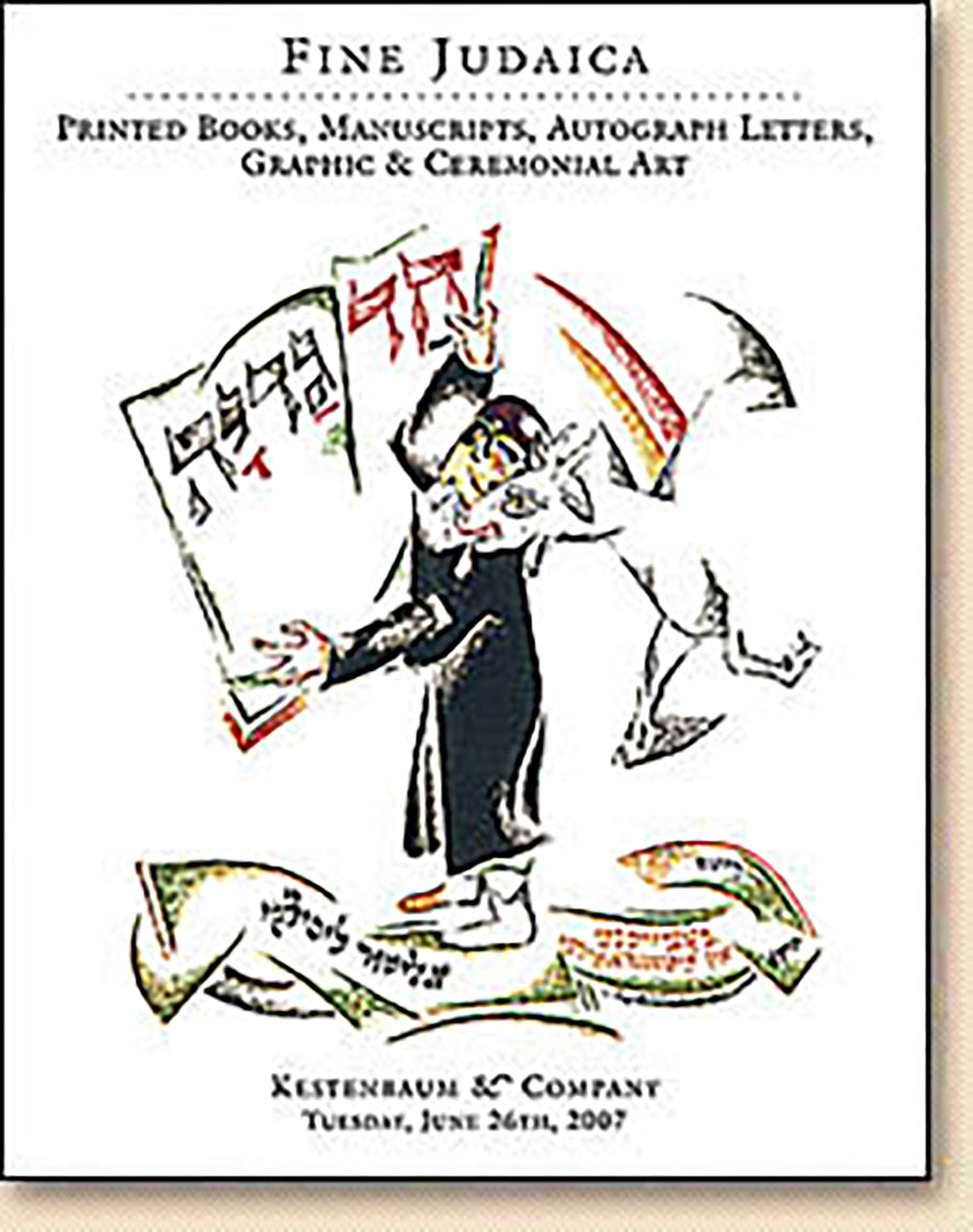Segal, Jacob ben Ezekiel. Shem Ya’akov

AUCTION 37 |
Tuesday, June 26th,
2007 at 1:00
Fine Judaica: Printed Books, Manuscripts, Autograph Letters, Graphic & Ceremonial Art
Lot 128
(KABBALAH).
Segal, Jacob ben Ezekiel. Shem Ya’akov
Franfurt on the Oder: Michael Gottschalk 1716
Est: $800 - $1,200
PRICE REALIZED $700
Shem Ya’akov is an ethical tract with pronouncedly ascetic tendencies, based on the teachings of Kabbalah. The author, R. Jacob ben Ezekiel of Zlotowo, was rabbi of nearby Lobsenz, both towns in North-West Poland.
Gershom Scholem suspected the author of being a crypto-Sabbatian, which is to say a secret admirer of the false Messiah Shabbetai Zevi. Scholem writes: “there is evidence that not a few of the most influential moral preachers and authors of moral literature of a radical ascetic bent were secret Shabbateans of the moderate…wing.” In the list of influential “musar-books” of this period, Scholem includes Shem Ya’akov. (See his Kabbalah. Jerusalem, 1974, p. 278). The case for positing that Segal was a Sabbatian rests on a quote from the Sabbatian visionary Heshel Zoref and also a cryptic reference to the arousal of the planet Shabbetai (Saturn) in 1666, the year Shabbetai Zevi was crowned Messiah. Moreover, the colophon provides a chronogram for the year 1716 of “Moshi’im” (Saviours) - reminiscent of the chronogram “Moshi’a” for 1666, in vogue in Sabbatian literature published in Amsterdam the year that Shabbetai Zevi’s messiahship was heralded.
The work is of decided historical value, describing the first Swedish invasion of Poland in 1655, and of Bogdan Chmelnitzky’s massacre of the Jews in Great Poland in 1648.
See B. Naor, Post-Sabbatian Sabbatianism (1999), pp. 69-71
